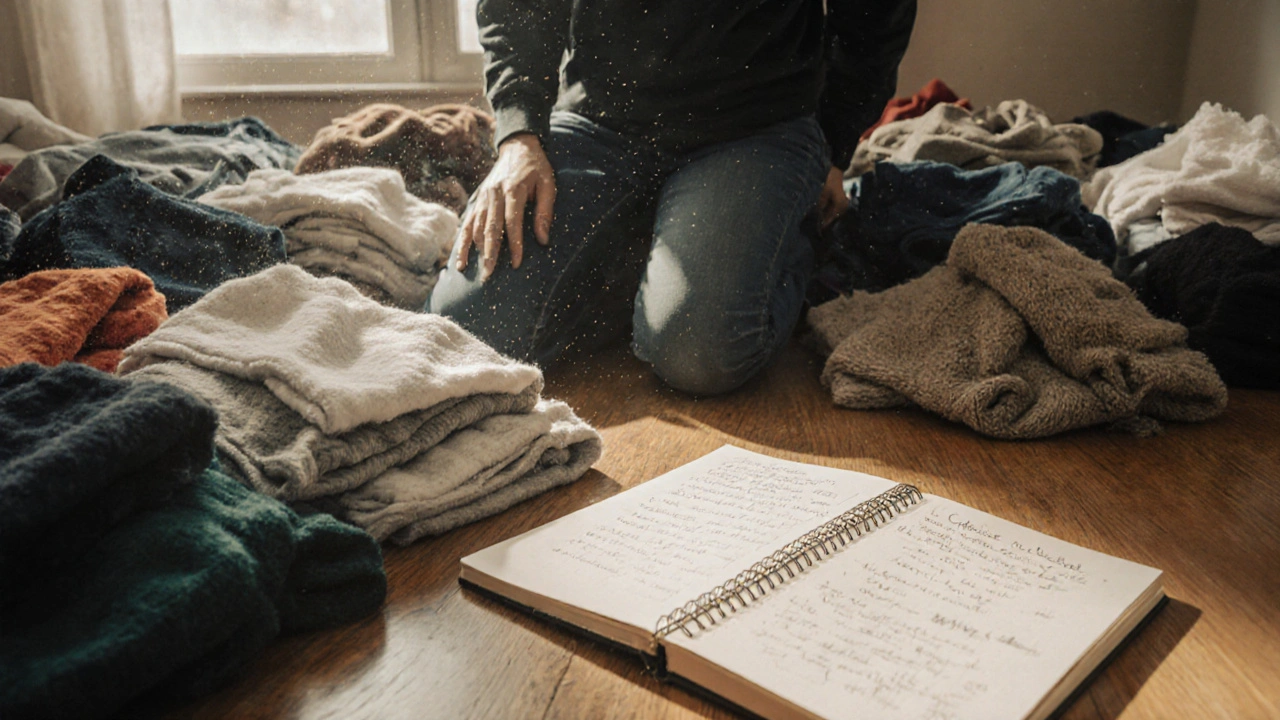Wardrobe Carbon Audit: Track Your Fashion’s Environmental Impact
When you think about your wardrobe carbon audit, a simple process to measure the environmental cost of the clothes you own and wear. It’s not about counting shirts—it’s about understanding how much water, pollution, and waste each piece has used up before it ever hit your closet. Most people don’t realize that one cotton t-shirt can take over 2,700 liters of water to make. That’s enough to drink for nearly three years. And that’s just one item. The fast fashion impact, the environmental damage caused by mass-produced, low-cost clothing. Also known as throwaway fashion, it’s draining rivers, poisoning soil, and filling landfills faster than we can replace our closets. Your clothing waste, the discarded garments that end up in landfills or incinerators. In the U.S. alone, over 11 million tons of textile waste is generated every year. Most of it isn’t recycled—it’s dumped. This isn’t just a global problem. It’s personal. Every time you buy something new, you’re adding to a system that treats clothes like disposable items. But you don’t have to keep playing along.
A wardrobe carbon audit doesn’t mean you need to stop shopping forever. It means you start asking better questions: Where did this come from? How many times have I worn it? What happens when I’m done? The posts below show real ways people are cutting their fashion footprint without giving up style. One person reused every bottom in their closet for a full year by rotating them seasonally. Another tracked her clothing’s water use and realized she’d bought 12 pairs of jeans she never wore. She donated them—and saved over 30,000 liters of water just by letting go. You don’t need a perfect capsule wardrobe to make a difference. You just need to know what you own, why you keep it, and what it’s costing the planet.
These aren’t theory posts. They’re real stories from people who did the math, looked in their closets, and changed how they dress. You’ll find guides on how to spot hidden waste in your wardrobe, how to stretch the life of what you already have, and how to make smarter choices without spending more. Whether you’re just starting to care about sustainability or you’ve been doing this for years, there’s something here that will make you pause—and maybe even rearrange your closet.
Wardrobe Carbon Audit: How to Calculate and Reduce Your Closet’s Environmental Footprint
Posted by Anna Fenton on Nov, 16 2025

Learn how to calculate your wardrobe's hidden carbon footprint and reduce it with simple, practical steps-no new clothes needed. Discover which items hurt the planet most and how to fix your habits for real impact.
